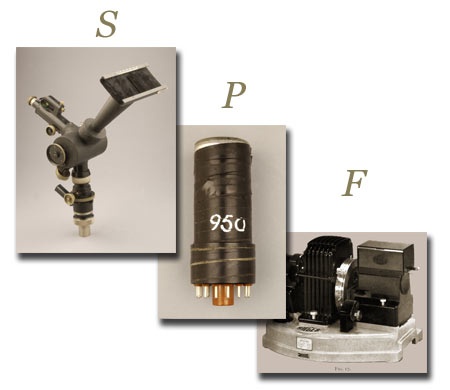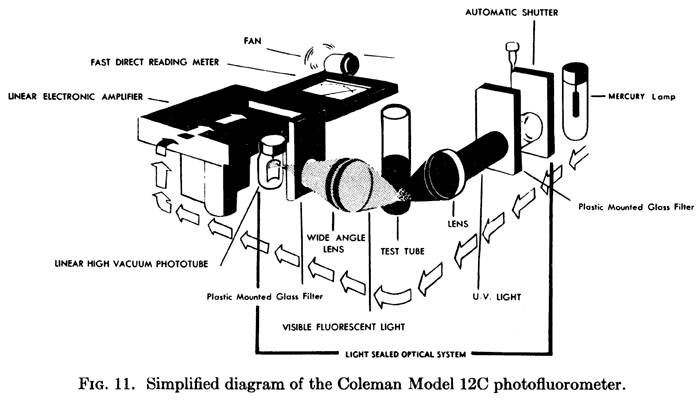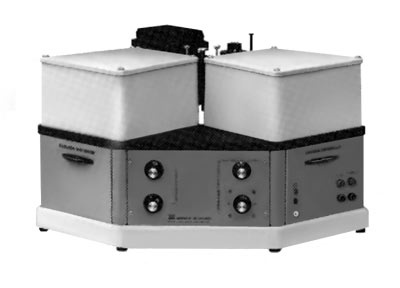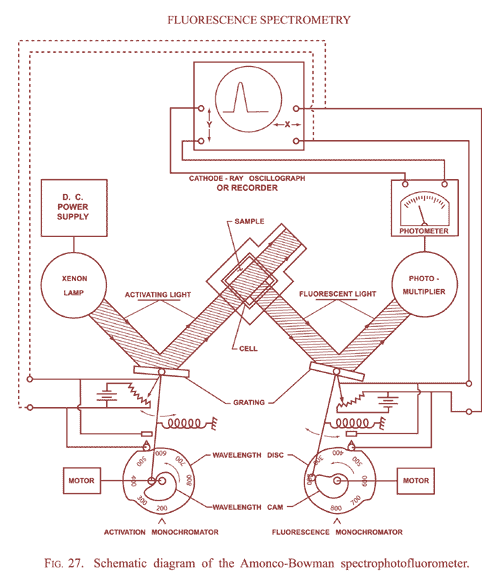...
The Spectro-Photo-Fluorometer
| Div | ||||||||||
|---|---|---|---|---|---|---|---|---|---|---|
| ||||||||||
|
...
Each photon (bit of light) strikes a photocathode, ejecting an electron. The electrons are accelerated toward a secondary electrode called a dynode, which is held at a more positive potential so that each electron gains enough energy to eject several electrons from the dynode. This is the electron "multiplier." By using a series of dynodes, the PMT creates a cascading effect-the system creates 100,000-10,000,000 electrons for each photon hitting the first cathode. The amplified signal can be collected and measured at the end.
Fluorometer
| Div | ||||||||||
|---|---|---|---|---|---|---|---|---|---|---|
| ||||||||||
|
Spectrophotofluorometer
| Div | ||||||||||
|---|---|---|---|---|---|---|---|---|---|---|
| ||||||||||
|
| Div | ||||||||||
|---|---|---|---|---|---|---|---|---|---|---|
| ||||||||||
|
...
Video link on the operation of the SPF
| Center | |||||
|---|---|---|---|---|---|
|





